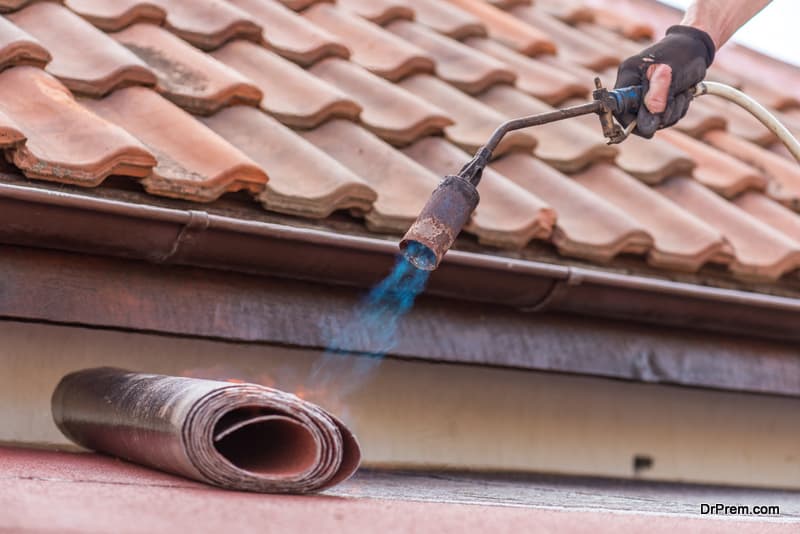When it comes to upgrading your roofing system, there are several important factors to consider. Protecting a structure from the elements starts with your roof, so it’s essential to ensure that any upgrades are well-planned and executed. This article will explore critical considerations before undertaking a roofing upgrade, focusing on the BA-ALRF aluminum hatch as a valuable addition to your roofing system.
1. Assessing the Current Condition
Before diving into any roofing upgrades, it is essential to inspect the present state of your roof. A professional inspection helps identify any existing issues or weaknesses. This assessment will provide a baseline understanding of your roof’s condition and help determine the necessary scope of the upgrade.
2. Identifying Your Needs
Next, it’s essential to identify your specific needs and goals for the roofing upgrade. Are you interested in increasing your property’s aesthetic appeal, your home’s energy efficiency, or the durability and life of your furnishings? A clear understanding of your goals can assist in guiding your decision-making process and guarantee that the update aligns with the results you want to achieve.
3. Considering Environmental Factors
Your property’s environment plays a significant role in determining the appropriate roofing materials and system. Consider factors such as climate, weather patterns, and exposure to environmental elements. For instance, if you live in a region prone to high rainfall, having a roofing system with excellent waterproofing features is indispensable.
4. Exploring Roofing Material Options
Roofing materials come in many options, each with benefits and considerations. Traditional choices like asphalt shingles, metal, and clay tiles are popular, but newer alternatives like green roofs and solar tiles are gaining traction. When making your choice, consider the longevity of each material, how much it will cost, how much upkeep it will need, and how aesthetically pleasing it will be.
5. Evaluating Energy Efficiency
Energy efficiency is a critical aspect of any modern roofing system. Performing roofing repairs and replacements is a fantastic chance to boost insulation and reduce overall energy use. Look for materials with high insulation values, such as reflective coatings or energy-efficient membranes, which can help lower your heating and cooling costs.
6. Ensuring Safety and Access
Safety should be a top priority when upgrading your roofing system. Access points like roof hatches are essential for maintenance, repairs, and inspections. The BA-ALRF aluminum roof hatch is an excellent option to consider. Its durable construction, weather resistance, and secure locking mechanism provide safe and convenient access to your roof while maintaining structural integrity. The specification sheet provides more details.
7. Consulting with Professionals
Roofing improvements may require a specialist’s knowledge and years of experience. It’s advisable to consult with professional roofing contractors who can assess your needs, offer valuable insights, and ensure a smooth and successful upgrade process. Their familiarity with regional architectural standards and regulations will help you navigate any legal requirements associated with the upgrade.
8. Planning for Maintenance
Regular maintenance is essential to keep your upgraded roofing system in optimal condition. Before you put the finishing touches on your upgrading plans, consider the long-term maintenance needs of the selected materials and ensure you have a strategy to deal with any essential upkeep. Your investment will protect you, and the lifetime of your roof will extend as a result.
9. Setting a Realistic Budget
Roofing improvements may have very different price tags based on the materials used, the roof’s size, and the job’s difficulty level. Setting a realistic budget and exploring various financing options is crucial if needed. Investing in high-quality materials and professional installation may save you money in the long term by lowering the frequency with which you will need to make repairs or buy new ones.
10. Securing Permits and Insurance
Before commencing any roofing upgrade, checking local regulations and securing necessary permits is essential. Take time to obtain the required permits to avoid legal issues and delays in the project. In case of damage or other unforeseen circumstances, make sure that your insurance policy covers your updated roof.
11. Assessing Structural Integrity
You must evaluate the soundness of the structure of your building before moving forward with any kind of roofing modification. Evaluate the roof’s weight and load-bearing capacity to determine if any reinforcements or changes are necessary. The advice of a structural engineer might prove to be quite beneficial insights and ensure your upgraded roofing system is adequately supported.
12. Understanding Longevity and Warranties
Different roofing materials have varying lifespans and warranties that reflect their durability. Find out the expected longevity of the chosen materials and the warranties manufacturers offer. Using this knowledge, you can make a well-informed choice and formulate a financial plan for future repairs or replacements.
13. Considering Roof Slope and Drainage
The slope or pitch of your roof plays a crucial role in its functionality. A roof with improper slope or inadequate drainage can lead to water pooling, leaks, and other water-related issues. When upgrading your roofing system, consider if adjustments to the pitch or improved drainage systems are necessary to ensure proper water runoff.
14. Ventilation and Air Circulation
Maintaining a healthy, energy-efficient roofing system requires adequate ventilation and air movement throughout the attic space. Inadequate ventilation may result in a buildup of moisture, the development of mold, and a reduction in the building’s overall efficiency. During the upgrade process, explore options for improved ventilation systems, such as ridge vents, soffit vents, or powered attic fans, to promote airflow and prevent potential issues.
15. Sustainability and Environmental Impact
As environmental concerns continue to grow, considering your roofing upgrade’s sustainability and environmental impact is becoming increasingly important. Try to choose roofing materials that aren’t harmful to the environment, can be recycled, or are produced using renewable resources.
16. Noise Reduction
Depending on the location and environment surrounding your property, noise reduction may be a consideration for your roofing upgrade. During a hailstorm or heavy rain, some materials, like metal roofs, might make more noise than others. If noise reduction is a priority, explore roofing materials with sound-dampening qualities or add additional insulation layers to mitigate unwanted noise.
17. Compatibility with Existing Systems
If your property has existing rooftop installations such as solar panels, satellite dishes, or HVAC equipment, it’s essential to consider their compatibility with the new roofing system. Discuss the upgrade plans with relevant contractors or technicians to ensure the new roof will accommodate and support these systems without compromising their functionality or structural integrity.
18. Enhancing Curb Appeal
While the functionality and durability of your roofing system are paramount, it’s also worth considering the visual appeal of the upgrade. The roof is a prominent feature of any building, and a well-designed and aesthetically pleasing roof can enhance your property’s overall curb appeal and value. Explore roofing materials, colors, and styles that align with your architectural design and personal preferences.
19. Planning for Future Expansions or Modifications
When upgrading your roofing system, it’s wise to anticipate future expansions or modifications that may be necessary. If you have plans to add additional rooms, install new equipment, or make structural changes, consider how these future endeavors may impact the roofing system. Flexibility and discussing potential needs with professionals can help streamline future upgrades or modifications.
20. Maintenance Accessibility
Finally, when planning your roofing upgrade, consider the accessibility for future maintenance and repairs. Ensure that the design allows for safe and convenient access to all areas of the roof. Features like walkways, anchor points, or the BA-ALRF aluminum roof hatch mentioned earlier can facilitate regular inspections, maintenance tasks, and necessary repairs.
Upgrading your roofing system is a significant undertaking, and considering these additional factors will help ensure a successful and well-rounded project.
Article Submitted By Community Writer




